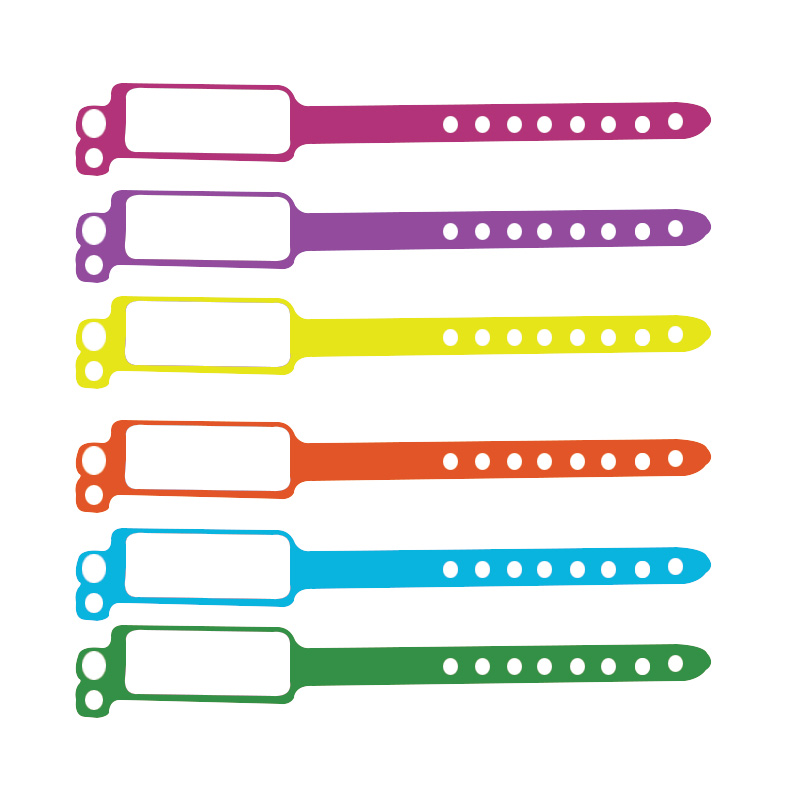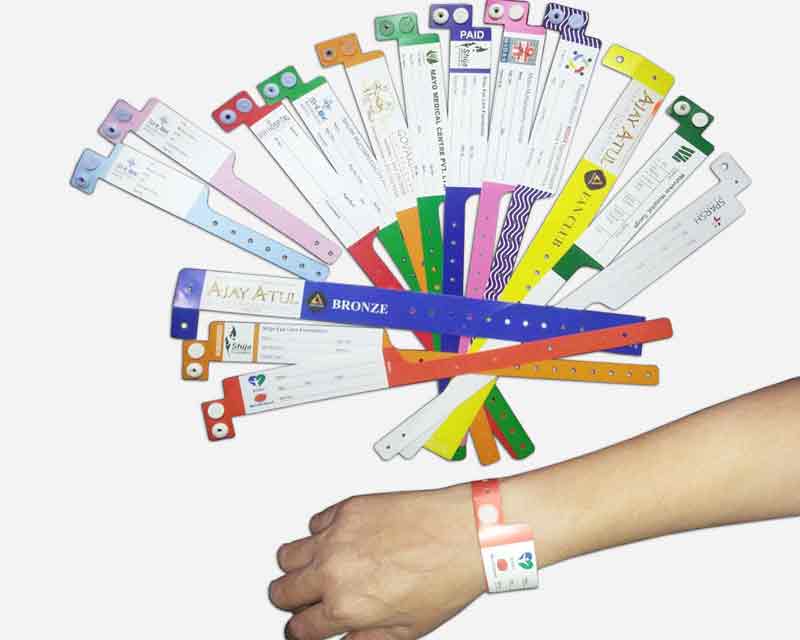Patient Identification Band: Enhancing Correctness and Effectiveness in Hospitals
Wiki Article
Checking Out the Various Sorts Of Patient Identification Band Made Use Of in Clinical Facilities
In the detailed world of medical care, the important role of Patient Identification bands often goes undetected. These bands, varying from basic paper wristbands to sophisticated RFID bands, form the foundation of Patient security methods, guaranteeing accuracy in Patient Identification.Recognizing the Value of Patient Identification Bands
While they may seem like mere devices, Patient Identification bands play an important duty in clinical facilities. These bands offer as a crucial tool for verifying Patient identity, stopping medical mistakes associated to misidentification. Patient Identification bands likewise help in simplifying administrative tasks, guaranteeing accurate record-keeping and payment.Typical Paper Wristbands: Their Use and Limitations
Standard paper wristbands have been a staple in Patient Identification across various clinical facilities. While their usage is prevalent, they nurture certain constraints that might affect their effectiveness in Patient administration. This section will certainly focus on the extent of their application and the integral drawbacks connected with their use.
Paper Wristbands: Use Scope
In the world of Patient Identification, paper wristbands have long held a critical function. These bands are generally made use of in outpatient settings, where the Patient's remain is temporary. The wristbands consist of necessary info such as the Patient's name, date of birth, and an one-of-a-kind Identification number. This straightforward, yet efficient system, permits medical specialists to rapidly and accurately determine people, making sure the appropriate treatment is administered. Paper wristbands are likewise made use of in emergency scenarios, where rapid Identification is extremely important. Their use encompasses occasions like blood donation drives and mass inoculation programs, further highlighting their convenience. Despite improvements in technology, the humble paper wristband continues to be a trusted and affordable option for Patient Identification in various health care situations.Limitations of Paper Wristbands
In spite of their prevalent use, paper wristbands are not without their disadvantages. Their physical longevity is just one of the substantial constraints. Direct exposure to water, sweat, or misuse can provide them unreadable and even create them to degenerate. In enhancement, paper wristbands commonly lack the technical capabilities of even more modern alternatives, such as barcoding or RFID chips, limiting their capability to merely showing written details. The inability to update or change the data on the wristband is another shortcoming. Furthermore, if the info is handwritten, readability can be jeopardized, bring about possible misidentification. Paper wristbands can cause pain or skin irritation to some people, particularly when worn for extensive periods.Barcoded Wristbands: Improvements in Patient Identification
While Patient Identification has actually long been a crucial facet of healthcare, the development of barcoded wristbands signifies a considerable jump forward. These bands leverage the simpleness of barcoding technology, permitting Patient info to be promptly scanned and accessed. They improve the rate and accuracy of Patient Identification, lowering the risk of medical mistakes connected to misidentification. Barcoded wristbands are economical, easy to produce, and get rid of handwriting mistakes usual with manual systems. Nevertheless, they are not without restrictions. While they use renovations over conventional bands, the barcode can end up being smudged or used, providing it unreadable. Regardless of this, barcoded wristbands continue to be an important tool in contemporary medical care setups, signifying the junction of technology and Patient treatment.Superhigh Frequency Identification (RFID) Bands: a Step Towards Futuristic Healthcare
The evolution of Patient Identification bands has produced the emergence of Superhigh frequency Identification (RFID) Bands (patient identification band). These cutting-edge gadgets present vital advantages for healthcare facilities, offering an extra effective and technically advanced methods of Patient Identification. The execution of RFID in health care is a considerable step in the Get More Information direction of a much more futuristic method to Patient administration and safetyRecognizing RFID Bands

RFID Bands: Key Benefits
Accepting a future where innovation and health care merge, superhigh frequency Identification bands offer several vital benefits. Mostly, these bands enhance Patient safety and security by giving precise, immediate Identification, thereby lowering clinical errors. RFID bands can store a substantial quantity of Patient information, including clinical background and allergic reactions, enabling personalized treatment. They likewise streamline management tasks, as the automated data entrance replaces hands-on processes, boosting effectiveness and decreasing documentation. RFID bands supply real-time tracking of patients, important in high-risk atmospheres such as surgical procedure or intensive treatment. Finally, these bands are durable and resistant to environmental variables, ensuring regular functionality. Generally, RFID bands represent a considerable advancement in Patient Identification modern technology, benefiting both individuals and doctor.
Executing RFID in Health Care
These bands provide a smooth means to track and identify clients, guaranteeing their security and boosting effectiveness in therapy procedures. RFID bands decrease clinical errors by giving precise Patient Identification, which is vital in stopping misdiagnosis or incorrect medication administration. Hence, the implementation of RFID find out here now bands is a considerable action towards boosting Patient safety and security and healthcare shipment.
Color-Coded Wristbands: Assisting in Quick and Accurate Medical Diagnosis
In the dynamic environment of a clinical facility, color-coded wristbands have actually arised as important tools for swift and specific Identification of a person's clinical condition. These wristbands, worn by patients, lug details shades that correspond to various clinical conditions or conditions. This system is developed to provide immediate aesthetic signs to healthcare carriers, enhancing Patient security and care top quality.Techniques for Efficient Execution and Management of Patient ID Bands
Achieving optimum use of Patient Identification bands necessitates a well-structured approach for their application and management. Patient education is additionally vital; clients have to comprehend the purpose of the bands and the need for their continuous wear. It's important to have a back-up plan in area, such as barcode scanning or biometrics, to guarantee that Patient Identification is never ever compromised.
Final thought
Patient Identification bands are crucial in medical facilities to ensure safety and precision. Conventional paper, barcoded, RFID, and color-coded wristbands each hold one-of-a-kind advantages, varying from cost-effectiveness to advanced information storage space and instant clinical alerts. Efficient execution and management of these bands can substantially reduce medical mistakes, boost effectiveness, and boost overall Patient care. Thus, understanding and making use of these Identification tools is critical for maintaining high standards in medical care.These bands, differing from basic paper wristbands to sophisticated RFID bands, form the backbone of Patient security protocols, making sure precision in Patient Identification.The advancement of Patient Identification bands has actually brought concerning the appearance of Radio webpage Frequency Identification (RFID) Bands. Overall, RFID bands represent a significant development in Patient Identification technology, benefiting both clients and healthcare companies.
RFID bands minimize clinical mistakes by supplying precise Patient Identification, which is crucial in stopping misdiagnosis or wrong medication administration. Patient education and learning is additionally essential; individuals need to comprehend the purpose of the bands and the requirement for their consistent wear.
Report this wiki page